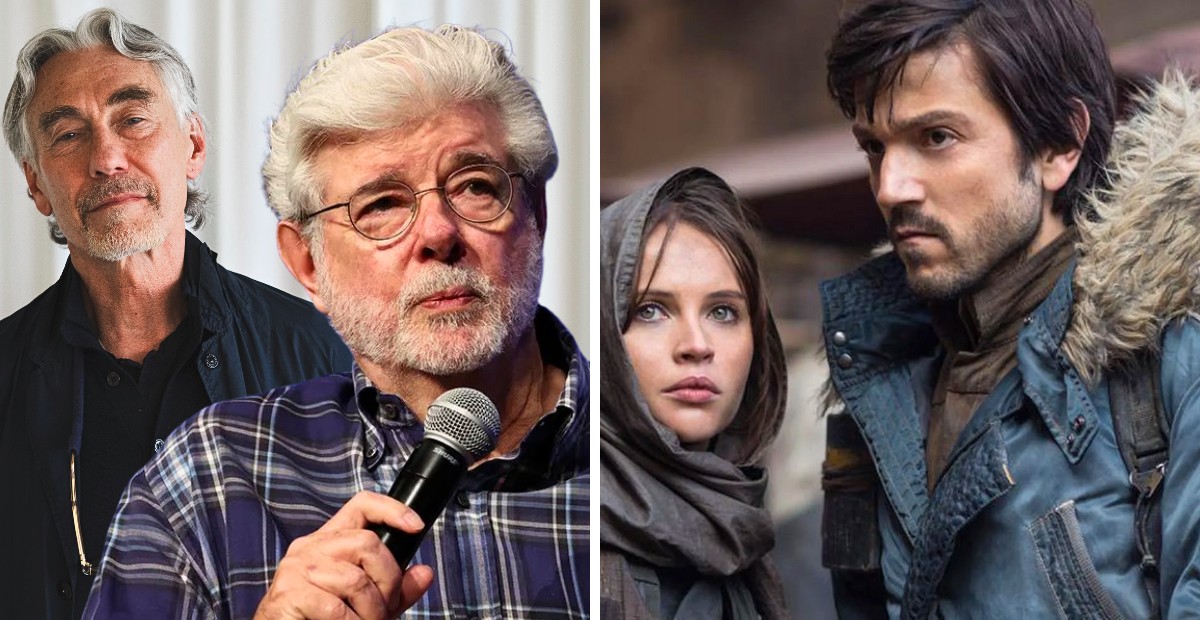Tony Gilroy, the writer and showrunner behind Andor, recently opened up about the only conversation he’s ever had with George Lucas. It happened right after Rogue One came out. As Gilroy shared in a Deadline interview, “George Lucas called me after Rogue, I had a 45-minute conversation with him after he saw Rogue One, and that’s the only time I’ve ever spoken to him. He loved it. He really did. He had a lot of things to say… It was like a call from the president.”
That moment stood out not just because Lucas rarely comments on newer Star Wars projects, but also because it confirmed something many viewers had already felt—Rogue One hit different.
Why Lucas Liked Rogue One (As We All Did)
A lot of people have speculated why Lucas responded so positively. One reason might be how Rogue One stays grounded in the lore without trying to imitate the original trilogy beat for beat. While The Force Awakens was seen as a nostalgic retread, Rogue One told a story that felt fresh but still deeply connected to what came before.
Some have pointed out that Lucas appreciated bold storytelling, even if it wasn’t always received well (The Phantom Menace, for example). Compared to other Disney-era entries, Rogue One tried something new within familiar territory—giving emotional weight to a small part of the A New Hope opening crawl. The movie also stayed close to Lucas’s original tone: mixing war themes with hope, loss, and rebellion.
One Reddit user put it well: “George always liked to try new things, even at the risk of being bad. And TFA took no risks because it was basically rehashing ANH.”
That contrast between playing it safe and making something different is probably why Lucas had more to say about Rogue One than any sequel film.
Andor Built On That Foundation
After Rogue One, Gilroy returned to get deeper into Cassian Andor’s world. But this time, with more time and space to develop characters. Andor became known for its grounded tone, political focus, and slower, character-driven pacing. It stood apart from most other Star Wars shows by putting less focus on cameos or legacy characters, and more on rebellion from the ground up.
That grounded storytelling and mature tone reminded some viewers of Lucas’s earlier ideas for a project called Underworld, an unproduced live-action show set in the seedy levels of Coruscant. According to users familiar with the scripts, it would’ve explored crime, politics, and espionage—a lot like what Andor ended up doing. There’s even talk that concepts like Maul as a crime lord and the idea of stealing the Death Star plans started in Underworld and later evolved into Rogue One and Andor.
As one user said, “Andor feels like the show Underworld wanted to be—cyberpunk Coruscant, spy missions, gritty writing. It’s the tone Lucas was heading toward, just more refined.”
How It Connects to Lucas’s Vision
There’s a common idea that George Lucas saw Star Wars as political commentary as much as space fantasy. The original trilogy had roots in real-world rebellion stories. The prequels were layered with themes about war, corruption, and the fall of democracy. Andor continues that legacy, not through Jedi or Chosen Ones, but through regular people caught in the system.
Some fans think Andor is the closest thing to Lucas’s spirit of storytelling since the prequels. One post said, “Lucas has always been extremely explicit with the inspirations for his stories. Andor and Rogue One follow that same line, just more grounded and modern.” The use of practical effects, physical sets, and a documentary-style camera also helped it feel like Lucas’s original trilogy, just evolved.
It’s also worth noting that Rogue One was pitched by John Knoll, a long-time Lucasfilm creative and VFX legend who worked closely with Lucas on the prequels. That existing connection probably made the movie feel more familiar and authentic to Lucas.

